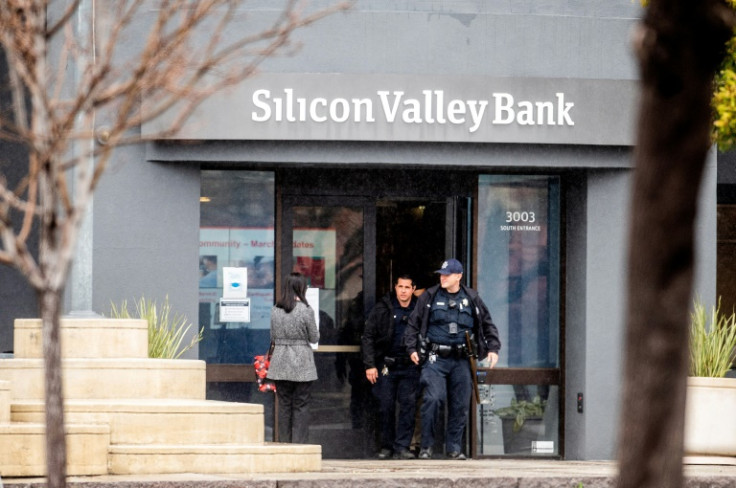Scores Of US Banks Face Similar Risks As SVB, As The Fed Keeps On Raising Rates
Scores of U.S. banks are facing similar balance sheet risks to those that brought down Silicon Valley Bank a couple of weeks ago, as the nation's central bank keeps on raising interest rates.
That's according to an academic paper by Erica Jiang of Chicago Booth, Gregor Matvos of Kellogg School of Management, Tomasz Piskorski of Columbia School of Business and Amit Seru of Stanford Business School.
The paper analyzed more than 4,800 U.S. banks to determine their exposure to the risks that led to the failure of SVB.
One of those risks was interest rate risk, the negative impact of rising interest rates on the asset side of the balance sheet — the market value of fixed interest rate assets — over the period of March 2022 to March 2023, and the finding was worrisome: The market value of a typical U.S. bank's assets dropped by 9%, which translates into $2.2 trillion.
Another risk was the prospect of a run on the bank by uninsured depositors, as was the case with SVB. Again, the authors found that the problem wasn't limited to SVB, but it extended to other banks, meaning that these banks were also prone to solvency.
"These results support the view that preventing a bank run by uninsured depositors should be of central focus to bank regulators and policymakers," Seru, who is the Steven and Roberta Denning Professor of Finance at Stanford University, said, as per a press release by the Stanford Institute of Economic Policy Research (SIEPR).
Still, it isn't clear how far regulators will go to protect the uninsured depositors of smaller banks without creating another problem, moral hazard.
That's the situation that banks may take on excessive risk as they believe that regulators will bail them out in the event of a financial crisis or failure, meaning that regulators may encourage the reckless behavior that brought the nation's banking system to this situation in the first place.
Nonetheless, Dean Kaplan, president of the Kaplan Group, doesn't see a repeat of the Great Financial crisis.
"The collapse of Silicon Valley Bank is a warning, but it is unlikely that we are looking at a liquidity crisis similar to 2008," he told International Business Times. "The banks that closed in 2008 were hit hard by losses related to terrible real estate loans and derivative products. It resulted from enormous amounts of lending to subprime customers based on the assumption that real estate prices could never decline, even temporarily. A huge percentage of financial institutions were tied into this massive scheme, and as losses mounted, no one knew who was safe, and liquidity was frozen."
Andy Hart of Delegate Advisors expects a wave of bank consolidations among regional banks under the most pressure and may sell to larger, more diverse institutions.
"It is also highly likely that bank regulations will evolve to mitigate the risk of a recurrence of the SVB issue," he told IBT. "Banks will likely have less ability to be creative and flexible after the events of the last few days, but the risk to depositors, in general, may be lower going forward as well."

© Copyright IBTimes 2025. All rights reserved.






















